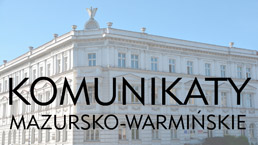W opracowaniu
Aktualny numer
Numery specjalne
Archiwum
O czasopiśmie
Redakcja
Rada Redakcyjna
Recenzenci
Instrukcja redakcyjna
Zasady etyki publikacyjnej
Zasady recenzowania
Ghostwriting
Prawa autorskie i polityka Open Access
Klauzula informacyjna RODO – dla autorów artykułów zgłoszonych do publikacji w kwartalniku „Komunikaty Mazursko-Warmińskie”
Kontakt
Cennik
PROJEKTY
Miejsce samorządu lokalnego w systemie administracji terenowej w Polsce po 1945 roku. Zarys
1
Instytut Północny im. Wojciecha Kętrzyńskiego w Olsztynie
Data publikacji online: 04-04-2017
Data publikacji: 05-04-2017
KMW 2017;295(1):95-108
SŁOWA KLUCZOWE
DZIEDZINY
STRESZCZENIE
In post–war Poland, there was a specific system of administration in which the structures of the general
authority with its representative bodies and the fragmented, temporary, territorial self–government co-existed.
The nature of the introduced system became particularly visible after 1950, alongside the strengthening
of the ruling body and the realisation of the vision of the “unification of state power” in the field. In essence, local
self–government was liquidated. This solution, as it was envisaged, was intended to guarantee the widespread
democratisation of public life and the transparency of state governance. In practice, the non–democratic system of
local administration ensured, amongst other things, a means of conducting the elections, limited the possibilities
for decision–making by local councilors on matters relating to their districts and a lack of financial autonomy of
the administration, which was the essence of self–government.
The political and administrative supervision of local government bodies operating in the area of national
councils was subordinated in an unnatural way to the ruling party. At the same time, the diffusion of the competences and activities of the general administration and national councils was not an isolated phenomenon, in
practice causing the actions of individual members of the administration to be unclear, slow and ineffective.
Udostępnij
ARTYKUŁ POWIĄZANY
Przetwarzamy dane osobowe zbierane podczas odwiedzania serwisu. Realizacja funkcji pozyskiwania informacji o użytkownikach i ich zachowaniu odbywa się poprzez dobrowolnie wprowadzone w formularzach informacje oraz zapisywanie w urządzeniach końcowych plików cookies (tzw. ciasteczka). Dane, w tym pliki cookies, wykorzystywane są w celu realizacji usług, zapewnienia wygodnego korzystania ze strony oraz w celu monitorowania ruchu zgodnie z Polityką prywatności. Dane są także zbierane i przetwarzane przez narzędzie Google Analytics (więcej).
Możesz zmienić ustawienia cookies w swojej przeglądarce. Ograniczenie stosowania plików cookies w konfiguracji przeglądarki może wpłynąć na niektóre funkcjonalności dostępne na stronie.
Możesz zmienić ustawienia cookies w swojej przeglądarce. Ograniczenie stosowania plików cookies w konfiguracji przeglądarki może wpłynąć na niektóre funkcjonalności dostępne na stronie.




